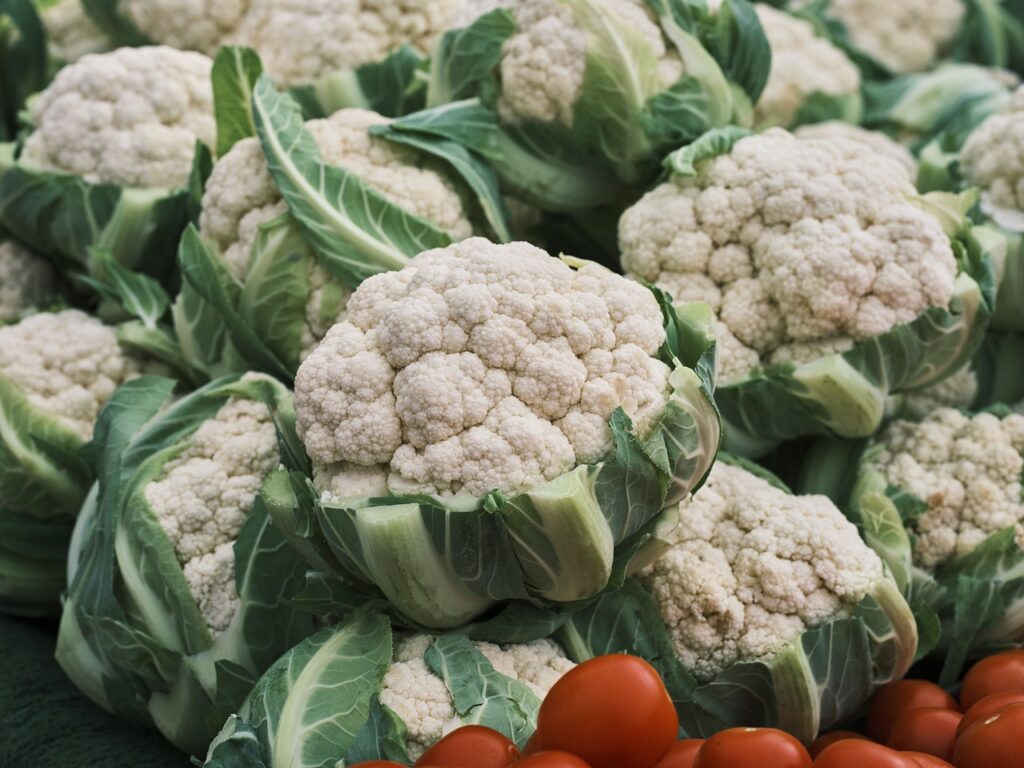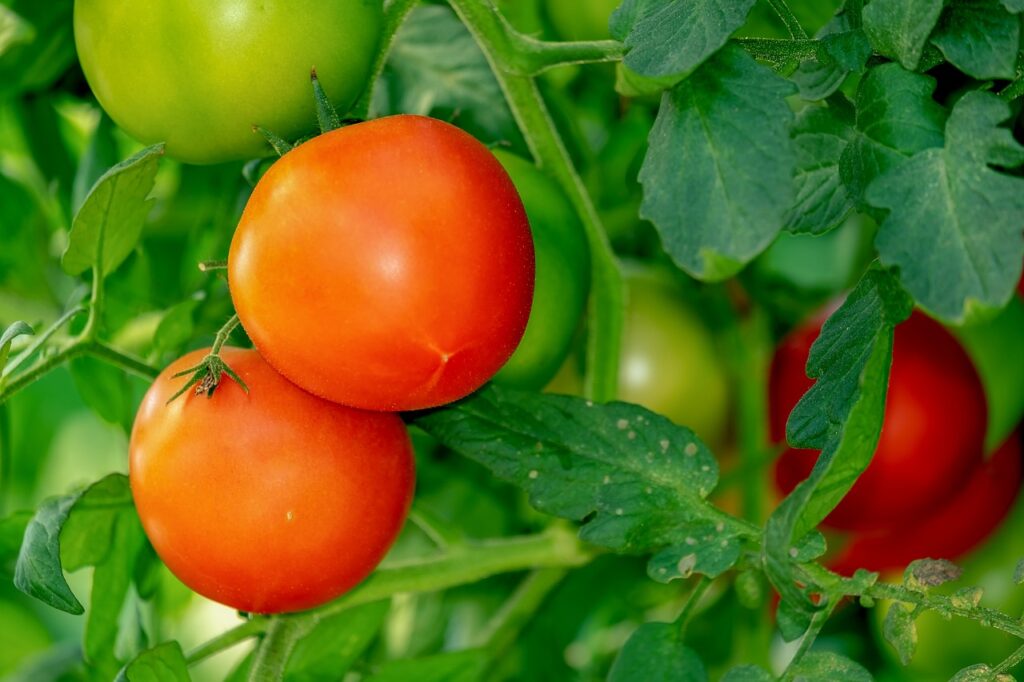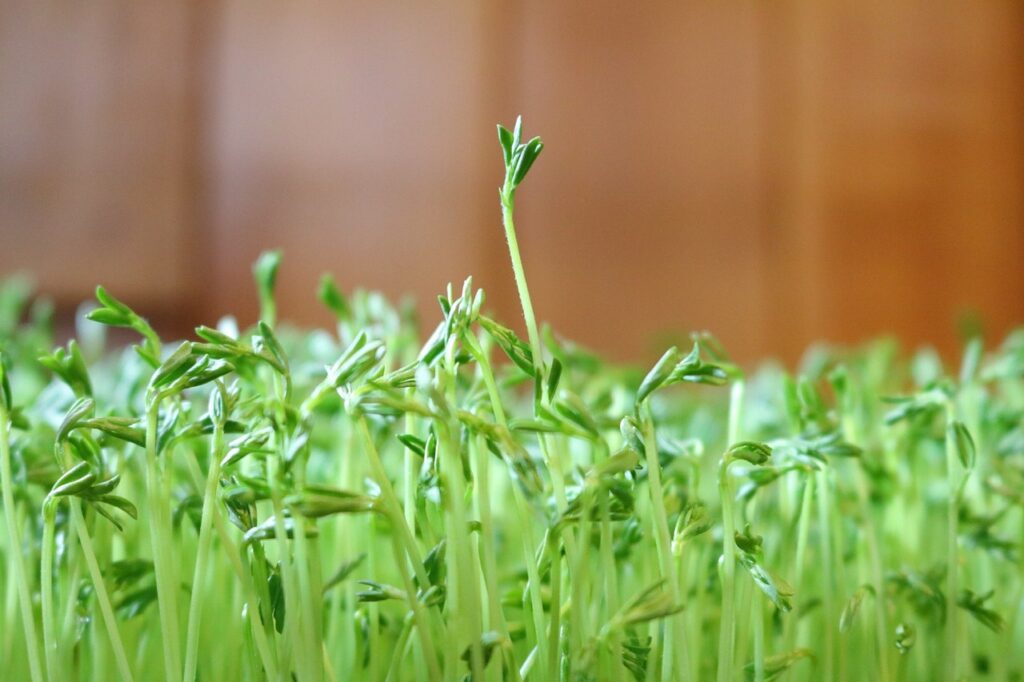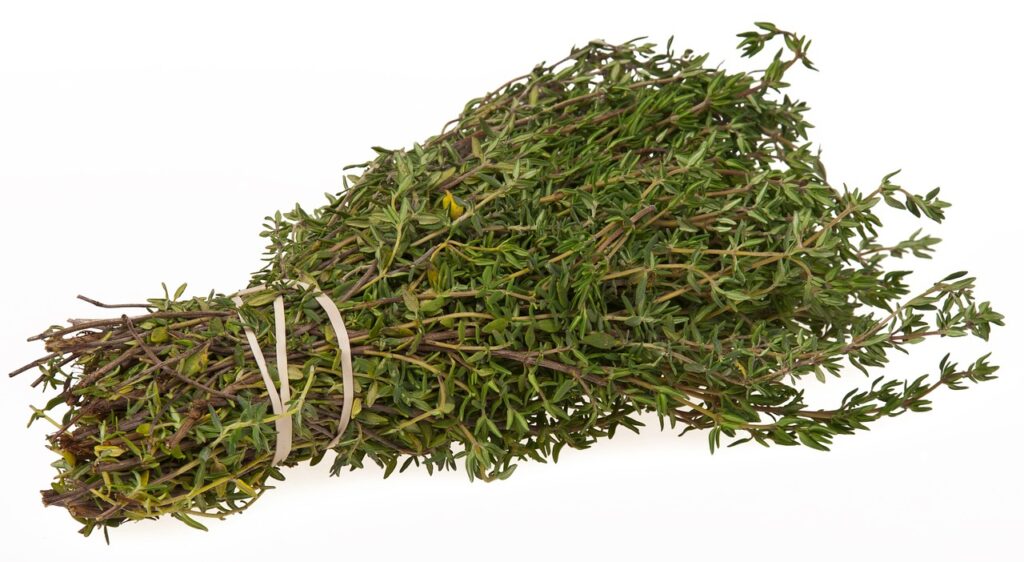Companion planting is a technique used by gardeners to maximize the efficiency of their garden space. This technique involves planting different crops together that will mutually benefit each other, either by repelling pests, attracting beneficial insects, or by sharing nutrients. In this blog, we will outline the basic skeleton of a companion planting guide, for cauliflower. This will include plants that are not good to be planted near cauliflower.
As an Amazon and ebay Affiliate we may earn a commission off any purchases made through our links. This won’t affect the price you pay.
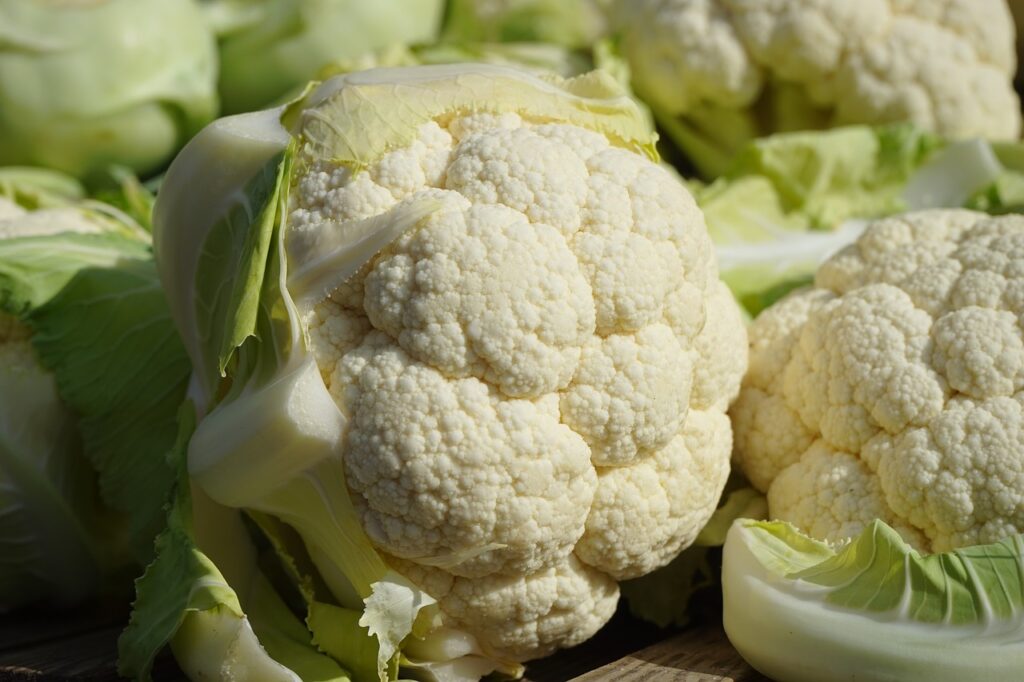
Cauliflower is a crop that thrives in cool weather and as such, it can be planted in both the spring and fall. It is a member of the brassica family, which also includes other vegetables like cabbage, broccoli, and kale. Cauliflower is a heavy feeder, you would do well to grow it in nutrient-rich soil. (More on growing Cauliflower below in this blog). By companion planting cauliflower, you can support growth, reduce insect damage and increase your yields.
Companion Plants for Cauliflower:
Dill
Dill has a strong aroma that repels pests like aphids and spider mites. These pests can affect the cauliflower crop. It also attracts beneficial insects like ladybugs and lacewings, which feed on pests that may be harmful to your cauliflower. These attributes make Dill a great companion plant to cauliflower.
Chamomile
Chamomile is another great companion plant for cauliflower. Not only does it repel pests and attract beneficial insects, but it also has a shallow root system that does not compete with cauliflower for nutrients. Chamomile also releases nutrients into the soil as it decomposes, which is beneficial for the growth of cauliflower.
Nasturtiums
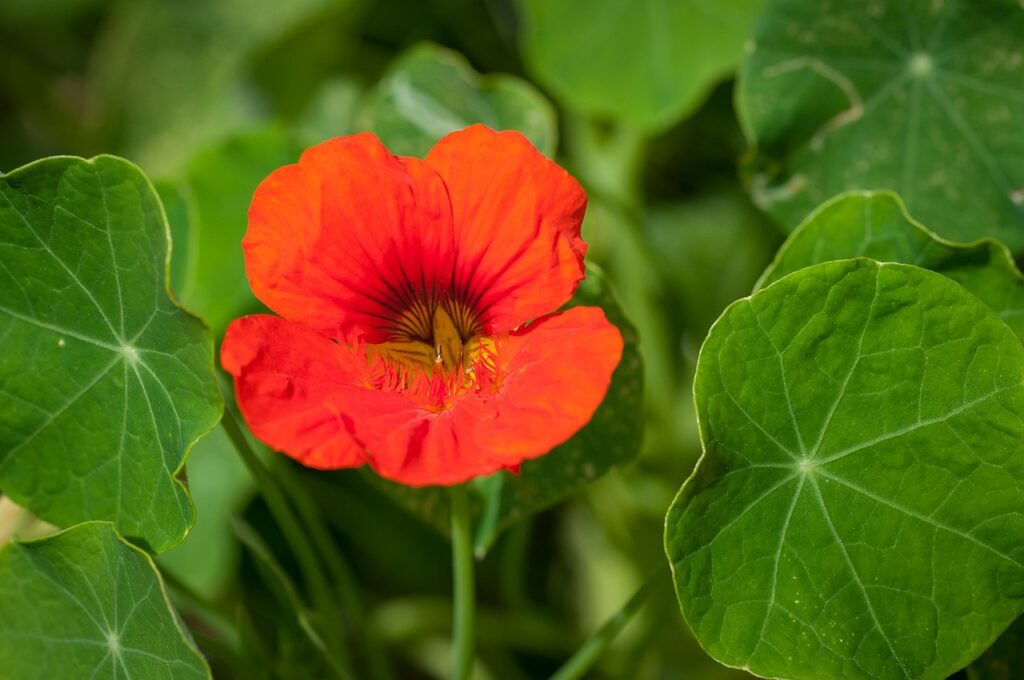
Nasturtiums repel pests like aphids, whiteflies, and cabbage worms. Beneficial insects like ladybugs and hoverflies are attracted to Nasturtiums. These insects are a great help in controlling pest populations in the garden. The flowers attract bees and hummingbirds. Additionally, nasturtiums are edible and can be used in salads or as a garnish.
Borage
Borage is a hardy annual herb with a long flowering spell, and bees love it. This can improve pollination for your cauliflower. As borage leaves decompose, they release minerals like potassium and calcium into the soil. These minerals can benefit the growth of cauliflower. The blue flowers of borage are also edible and can be used as a garnish or added to salads.
Celery
Celery is a great companion plant for brassicas like cauliflower. This popular salad component helps repel pests like aphids and cabbage worms, which can harm your cauliflower crop. Celery has a high water content, which can help keep the soil moist for your cauliflower.
Spinach

Trusty spinach is a great companion plant for cauliflower as it has a shallow root system that does not compete with cauliflower for nutrients. It also attracts beneficial insects to the garden, like ladybugs and lacewings, which can help control pest populations.
Marigolds
Marigolds are often used, by gardeners, to repel pests like whiteflies, aphids, and cabbage moths. They also attract beneficial insects like ladybugs and lacewings, which can help control pest populations in the garden. Additionally, marigolds have a deep root system that can help aerate the soil and improve nutrient uptake for your cauliflower crop.

Plants to Avoid Near Cauliflower:
1. Tomatoes – Tomatoes are heavy feeders and can deplete the soil of nutrients, which may impact the growth of cauliflower.
2. Strawberries – Strawberries can attract slugs and snails, which can harm your cauliflower crop. Strawberries are also heavy feeders and may compete with cauliflower for nutrients, which can impact the yield of your plants.
3. Pole Beans – Pole Beans can attract bean beetles, which may also harm your cauliflower plants. Pole beans also have an extensive root system that can compete with cauliflower for nutrients and moisture.
4. Peppers – Peppers are not good to be planted near cauliflower as they can also attract aphids and flea beetles, which may damage your cauliflower crop. Additionally, peppers are also heavy feeders and may compete with cauliflower for nutrients, which can reduce the yield of your plants.
5. Fennel – this is not the most sociable plant and, a bit of a loner. It releases chemicals that can stunt the growth of brassicas like cauliflower, broccoli, and cabbage. Fennel also negatively affects growth of the Nightshade Family (Tomato, Egg Plants and Peppers).

Tips on Growing Cauliflower
It is high in vitamins C and K, as well as minerals like potassium and magnesium. When grown in the right conditions, cauliflower can thrive and produce tasty heads that are perfect for a wide range of recipes. Let’s cover how to grow cauliflower step-by-step, from soil preparation to harvesting.
1. Soil Preparation
Before planting your cauliflower, it’s important to prepare the soil in your garden. Cauliflower needs well-draining soil that is rich in organic matter. Start by clearing the area of weeds, rocks, and other debris. Add in a layer of good compost or well-rotted, organic manure to enrich the soil. You can also add in a slow-release fertilizer to provide additional nutrients for your cauliflower plants.
2. Planting
Cauliflower is a cool-season crop and should be planted in the spring or fall. Make sure that the soil temperature is around 60°F before you plant your cauliflower seedlings. Dig holes that are around 18 inches apart and 2-3 inches deep. Carefully remove the cauliflower seedlings from their containers and plant them in the holes. Make sure all roots are completely covered with soil, and that none are exposed. Firmly, but gently press the soil to firm it up around the plant.
3. Watering
Cauliflower needs regular watering to thrive. Make sure that the soil around your cauliflower plants is consistently moist but not waterlogged. Water deeply as needed during the week, or whenever the top inch of soil feels dry to the touch. Watering deeply means the water really permeates the ground and the roots can grow deeper. Surface watering encourages shallow roots. In hot or dry weather, you may need to water more frequently to prevent your cauliflower from drying out, keep a close eye on it.
4. Fertilizing

Cauliflower thrives on nutrients so it’s important to fertilize and keep the nutrient levels up. A general-purpose fertilizer, applied every 4-6 weeks, throughout the growing season, should be sufficient. Liquid fertilizers are great for a quick top-up or boost of nutrients. Avoid high-nitrogen fertilizers, these promote leaf growth and not heads. A leafy cauliflower isn’t much use.
5. Harvesting
You can expect your cauliflower to take around 2-3 months to mature, depending on the variety. When the heads are firm and compact, and have that familiar look, it’s time to harvest. Cauliflower heads should be removed using a sharp knife, being careful not to damage the surrounding leaves. If you wait too long to harvest, the heads may become loose and the cauliflower will not be as tasty.
6. Storage
Refrigerated cauliflower should be good for up to a week. Keep it covered in a plastic bag or wrapped in a damp towel to prevent it from drying out. If you aren’t going to use it, immediately, you can also blanch and freeze cauliflower for future use. To do this, blanch the cauliflower in boiling water for 2-3 minutes, then rinse with cold water and drain. Pack the cauliflower into freezer-safe containers and freeze for up to 8 months.

Pest Control
Common Pests Affecting Cauliflower:
Aphids
These small, soft-bodied insects can be found clustered on the undersides of leaves and can cause damage by sucking the sap out of the plant, causing stunted growth and deformed leaves. To immediately remove these pests you can use a strong jet of water to knock them off the plant. Follow up by spraying the cauliflower plants with a solution of water and insecticidal soap.
Cabbage worms
These pests are actually the larvae of the white cabbage butterfly. They can cause tremendous damage and will by eat the leaves of the cauliflower plant. To control an infestation of cabbage worms, pick them off the plant by hand or apply a biological control, such as Bacillus thuringiensis (BT), which will kill the larvae.
Slugs and snails
These pests can cause damage by eating holes in the leaves of the cauliflower plant. An infestation of slugs and snails can be controlled use a slug bait, such as iron phosphate, which is safe for use around vegetables.
Flea beetles
In appearance, these are small black beetles. They damage cauliflower plants by chewing small holes in the leaves. To help control flea beetles, use row covers to keep the beetles off the plants or spray the cauliflower plants with a solution of water and insecticidal soap.

Cutworms
These are the larvae of moths. They cause damage by wrapping themselves around the stems of the cauliflower plant and eating them at soil level. An infestation of cutworms can be controlled using a biological control, such as nematodes. You can also create a barrier around the base of the plant with newspaper or cardboard.
Cabbage Loopers
These are the larvae of a moth that can cause significant damage to cauliflower plants by feeding on the leaves. The larvae are usually green and can blend in with the foliage. Cabbage loopers can be controlled with a biological control, such as Bacillus thuringiensis (BT). This will kill the larvae. You can also pick the larvae off the plant by hand or spray the cauliflower plants with a solution of water and insecticidal soap. Always inspect your plants, early detection will help to treat an infestation of cabbage loopers and prevent significant damage to the cauliflower plant.
Common Diseases Affecting Cauliflower:
1. Clubroot: This is a soil-borne fungal disease and it is characterized by swollen and distorted roots. These symptoms will cause stunted growth and yellowing. To prevent clubroot, make sure to rotate cauliflower crops, avoid planting brassica vegetables in the same location for more than two years in a row and add lime to the soil to raise the pH level.
2. Black rot: A bacterial disease that can cause yellowing and wilting of the leaves. To prevent black rot, maintain good air circulation around the plants, avoid overhead watering, remove any infected plants and avoid planting brassica vegetables in the same location for more than two years in a row.

3. Downy mildew: This fungal disease can cause yellowing and wilting of the leaves of the cauliflower plant. The easiest way to avoid downy mildew is to maintain good air circulation around the plants, and avoid overhead watering and only water the soil at the base of the plant. Water on the leaves will promote fungal growth.
4. Fusarium wilt: This another soil-borne fungal disease and it can cause wilting and the death of a cauliflower plant. To prevent fusarium wilt, avoid planting brassica vegetables in the same location for more than two years in a row. Fungal diseases, as mentioned above, are well managed with crop rotation.
Treatment for Pests and Diseases:
1. Organic pesticides: Organic pesticides are an environmentally friendly, effective option, against pests such as aphids, cabbage worms and flea beetles. Products such as neem oil, insecticidal soap and pyrethrin are options to consider. Following the instructions on the product label will ensure the best results.
2. Biological control: Nematodes, ladybugs and lacewings are natural predators and can be used to control pests such as cutworms and cabbage worms. To use these effectively, release them in the garden and let them naturally do their work.
3. Crop rotation: Rotate crops yearly. This will really help to prevent soil-borne diseases such as clubroot and fusarium wilt from building up in your soil.
4. Good hygiene: Clear debris and remove any infected plants. This will go a long way to prevent the spread of diseases like black rot and downy mildew.
5. Soil preparation: By preparing your soil well before planting, adding organic matter, and amending the pH level, you can help to create a healthy growing environment for your cauliflower plants.
Recipes
Cauliflower companion planting is likely to result in a great crop. Here are two easy recipes to use up excess cauliflower:
Recipe 1: Spicy Pickled Cauliflower
Ingredients:
- 1 head of cauliflower, cut it into smaller florets
- A cup of white vinegar
- 1 cup water
- 1/4 cup granulated sugar
- 2 cloves garlic, minced
- 1 tablespoon black peppercorns
- 1 teaspoon red pepper flakes
- 1/2 teaspoon mustard seeds
Instructions:
- Using a large saucepan, bring the white vinegar, water, sugar, garlic, black peppercorns, red pepper flakes, and mustard seeds to a boil.
- Reduce heat to low and add the cauliflower florets. Cook for 5 minutes, the cauliflower must be tender but still crisp.
- Remove the pan from the heat and let it cool to room temperature.
- Using a slotted spoon that lets the liquid drain, transfer the cauliflower to a clean, airtight glass jar.
- Then pour enough of the remaining liquid over the cauliflower.
- Close the jar and refrigerate for up to 2 weeks.
Recipe 2: Turmeric Pickled Cauliflower
Ingredients:
- 1 head of cauliflower, cut it into small florets
- A cup of white vinegar
- 1 cup water
- 1/4 cup granulated sugar
- 2 cloves garlic, minced
- 2 teaspoons ground turmeric
- 1/2 teaspoon black peppercorns
- 1/2 teaspoon mustard seeds
- 1 bay leaf
Instructions:
- In a large saucepan, bring the white vinegar, water, sugar, garlic, turmeric, black peppercorns, mustard seeds, and bay leaf to a boil.
- Reduce heat to low and add the cauliflower florets. Cook for 5 minutes, the cauliflower must be tender but still crisp.
- Remove the pan from the heat and let it cool to room temperature.
- Using a slotted spoon that lets the liquid drain, transfer the cauliflower to a clean, airtight glass jar.
- Pour enough of the remaining liquid over the cauliflower.
- Close the jar and refrigerate for up to 2 weeks.
Wrapping Up
Cauliflower is a very nutritious addition to your Spring and Fall vegetable garden. Plant cauliflower using the advice above and your chances of success are really good. Cauliflower companion plants will be handy assistants to ensure you achieve a successful crop.
See companion plants for turnips
As an Amazon and ebay Affiliate we may earn a commission off any purchases made through our links. This won’t affect the price you pay.
